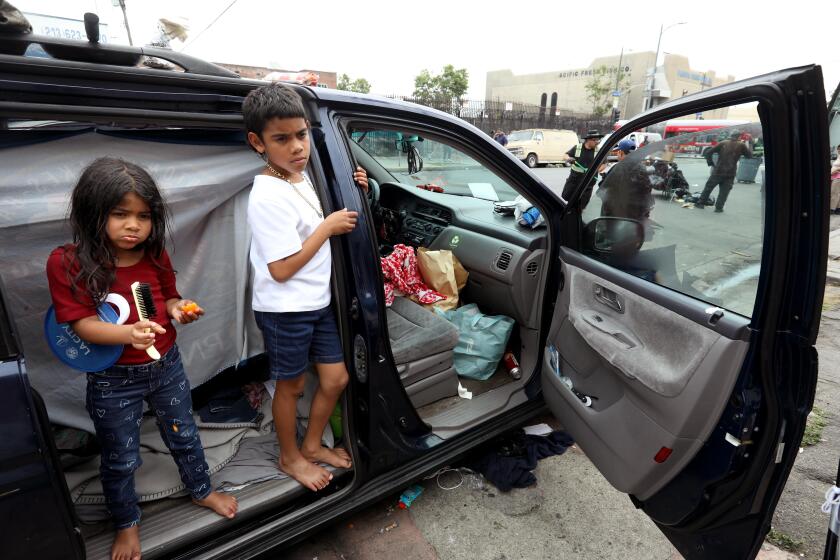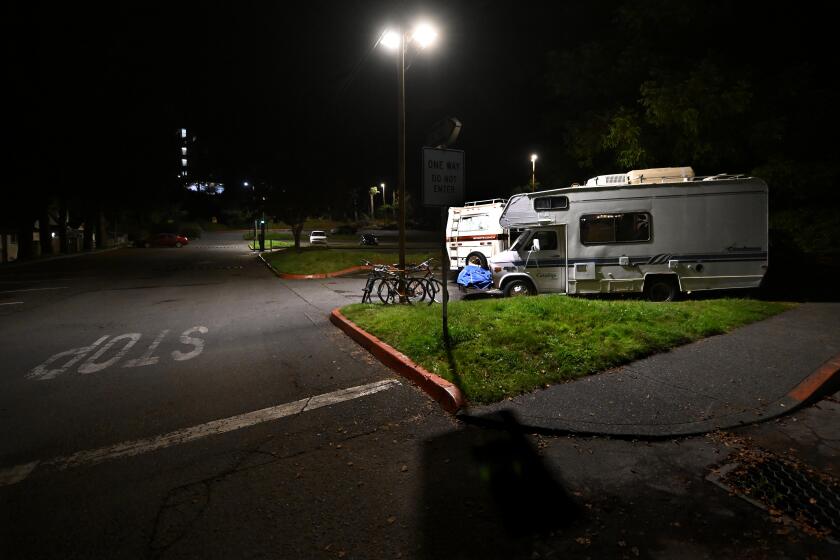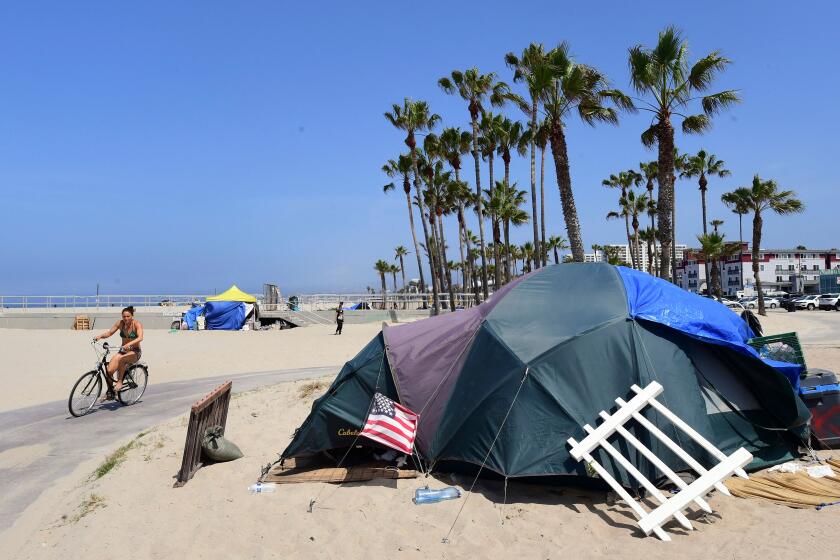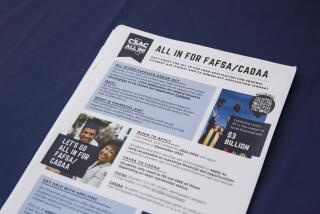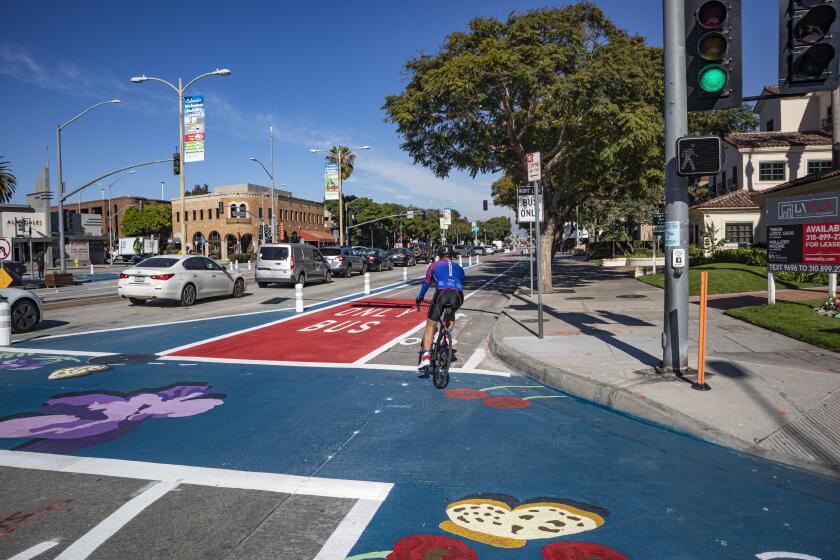Editorial: FAFSA is a nightmare for homeless students. Why haven’t we fixed it?
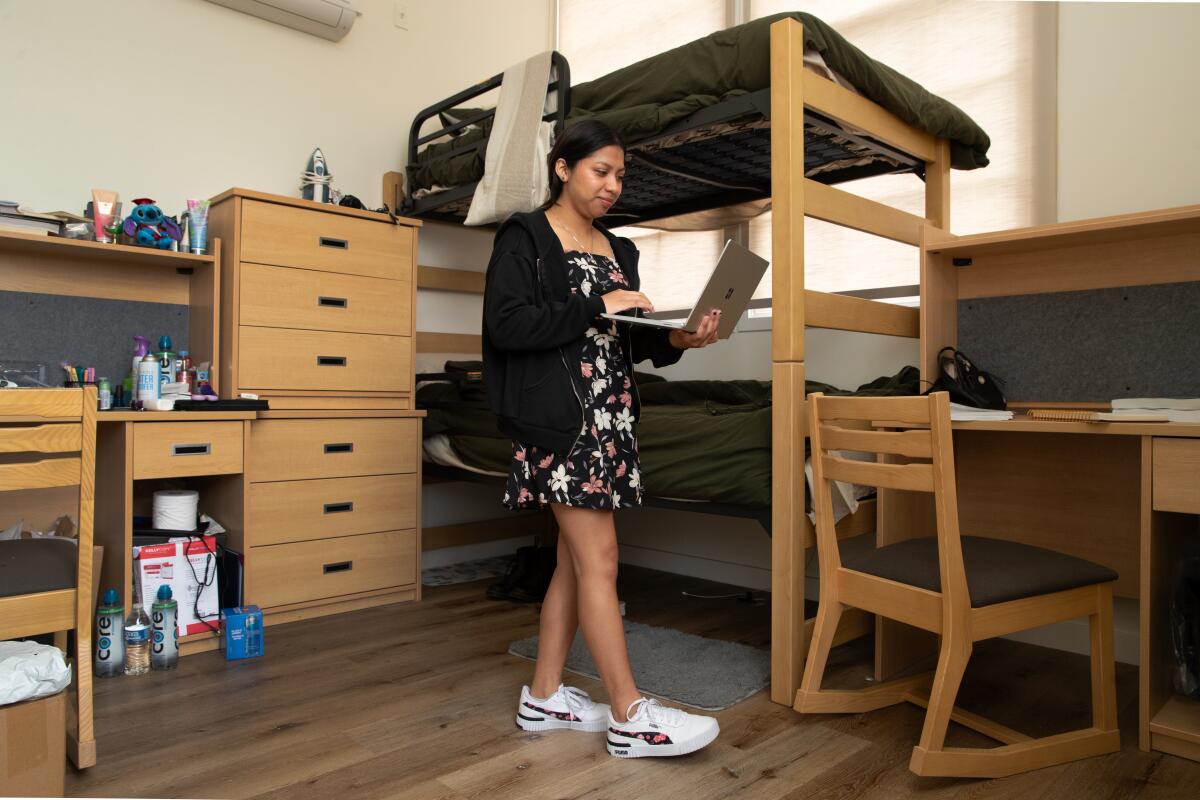
- Share via
The Free Application for Federal Student Aid, or FAFSA, is an annual requirement that most college-bound and enrolled college students dread. But for homeless youth it can be a nightmare because the requirements don’t take into consideration their unique circumstances. In some cases their applications have been invalidated because they lack a permanent address, don’t have enough financial information from parents or cannot get approval to file independent of a parent.
Congress passed the FAFSA Simplification Act in 2020 because lawmakers recognized that the long, complicated form discouraged students and families from applying for financial aid, and many couldn’t afford to attend college without it. The act was also supposed to remove many of the obstacles that homeless students face, but they continue to encounter difficulties. An estimated 1.5 million undergraduate and graduate students are homeless, according to federal data.
Advocates believe the number of children living on Skid Row will remain high as families in need of shelter confront a city with insufficient options.
The 2023-24 FAFSA application was updated so that if a student indicates he or she is homeless or at risk of becoming homeless, then the application automatically overrides the request for parent information and a home address, making the applicant file as independent of a parent, meaning they don’t have to submit parental financial data and can become eligible for more financial assistance. But students are still required to have a valid mailing address to submit the form, so the applicant must find a place where they can reliably receive mail, regardless of circumstances.
Completing the FAFSA is one of the best predictors of whether a high school senior will go on to college, according to the National College Attainment Network. Students who complete the FAFSA are 84% more likely to enroll in higher education, and for low-income students, FAFSA completion had been associated with a 127% increase in college enrollment.
An estimated 1 in 5 of the state’s 2 million community college students are unhoused.
The application process is confusing for even housed students and their families. It’s more difficult for students experiencing homelessness. They often need help from nonprofits, high school educators or friends and family just to get through it — and they may struggle to find the time, documentation and transportation to get that help.
After submitting their FAFSA, youth who are considered homeless then must file a Homeless Verification Form or have a qualified person write a letter to the college where they are enrolled to establish that they are indeed homeless. Then the school’s financial aid office has to resubmit the FAFSA to the Department of Education in time. If it’s late, the applicant’s financial package can be voided or decreased.
Federal law requires that students verify their homelessness once a year, but some colleges and universities have required homeless students to reverify their status multiple times within one school year to keep their aid. That is another inequity placed onto these students.
One man’s experience points to an answer: He was able to rent a home not through employment alone but because he reached the age for Social Security and Medicare.
In 2022-23, about 80,000 students indicated on FAFSA applications that they were homeless and independent of a parent, but only 45% were able to prove their homelessness. According to Barbara Duffield, executive director at SchoolHouse Connection, the students who were unable to prove their status could have been grilled for additional information or mistakenly believed they were ineligible and gave up. Organizations that aid homeless youth believe that the actual number of homeless youth pursuing higher education is higher than what federal data show.
This year, for the first time, the 2024-25 FAFSA application allowed students who had verified their homelessness in the 2023-2024 application to keep their status as long as their situation had not changed. This was a big win for homeless youth advocates nationwide. But many organizations that help unhoused youth apply for financial aid were disappointed with the new application’s rollout, which had significant technical issues that forced homeless students to wait until the glitches were fixed or to hunt down hard-to-find parent financial information.
There were many problems with this year’s FAFSA application, including a launch that was three months late, delaying financial aid award notifications and making it difficult for students to decide where they could afford to attend college. The delay is especially scary for homeless students because it could lead to them not having aid in time for the upcoming school year.
It is shameful that the Department of Education has not been able to make the federal student aid application process smoother for homeless students, who already face significant hurdles in getting a college education. Before the next FAFSA, federal officials should work closely with organizations and homeless youth who have firsthand experience with the FAFSA and can help fix it.
More to Read
A cure for the common opinion
Get thought-provoking perspectives with our weekly newsletter.
You may occasionally receive promotional content from the Los Angeles Times.
